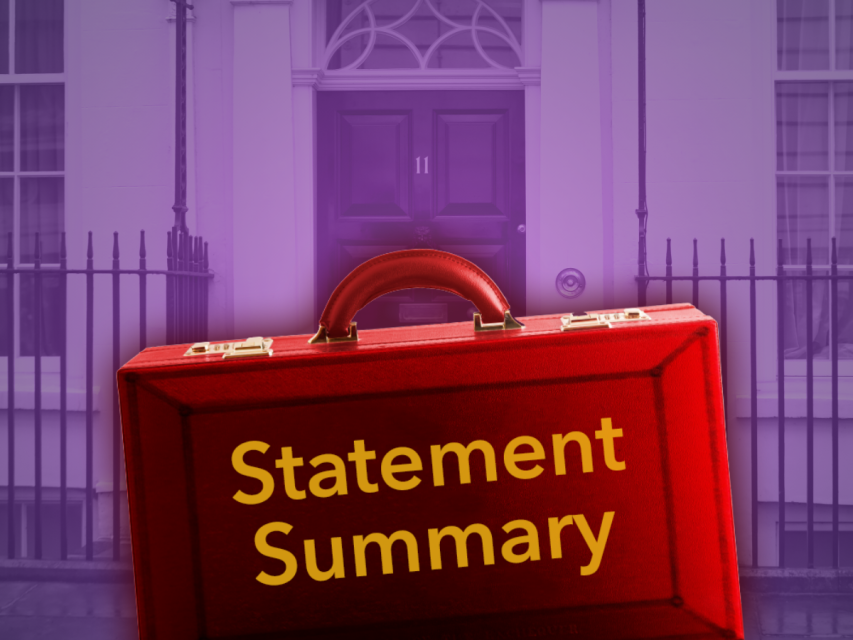Inflation falls in the UK – but wages are on the up.
The UK’s inflation figures for December, released in January, showed an unexpected fall in inflation. Annual consumer price inflation (CPI) fell to 2.5% in December – down from 2.6% in November and below economists’ forecasts of 2.6%.
Falling inflation is generally good news for investors looking to the Bank of England (BoE) for interest-rate cuts. But there’s an unexpected wrinkle in some other data published in January. Wages in the UK are currently outpacing inflation, with average weekly earnings for the three months to November 2024 up by 5.6% on the same period in 2023. After taking inflation into account, wages are up by 2.5% – meaning that people have more money in their pockets.
That’s where the good news could turn bad. As wage growth is a major inflationary force, the uptick in spending power could slow the pace of rate cuts. The BoE makes its next rate decision on 6 February. Investors currently expect a cut of 25 basis points (bps), bringing Bank Rate to 4.5%, but the wage data makes this less of a foregone conclusion.
Meanwhile, inflation is rising elsewhere. In the Eurozone, annual inflation increased to 2.4% in December from November’s 2.2%. Despite this, investors expect the European Central Bank (ECB) to cut interest rates by 25 bps at the end of January. In the US, the latest annual inflation rate was 2.9% in December, up from 2.7% in November and in line with the market’s expectations. Inflation data and strong economic indicators have reduced the likelihood of the US Federal Reserve (the Fed) cutting interest rates at its January meeting.
The UK economy: struggling growth and rising gilt yields.
Wages aside, economic news has been less than rosy recently. The UK economy grew by just 0.1% month on month in November. This came after two consecutive months of contraction: the economy shrank by 0.1% in both September and October.
Meanwhile, government bond yields have been rising (and bond prices falling). October’s Autumn Budget outlined the government’s plans for increased borrowing, which has led investors to reassess UK gilts. The Debt Management Office – which issues gilts to the market on behalf of the UK government – has indicated that the Budget will lead to higher gilt issuance to meet the government’s spending needs. In mid-January, the yield on 30-year gilts reached its highest level since the late 1990s. The 10-year gilt yield rose to 4.89%, its highest level since the 2008 financial crisis.
Higher gilt yields make borrowing more expensive for the government. So the Treasury may have some difficult decisions to make ahead of the Spring Statement in March. If borrowing costs are up, the Chancellor may have to choose between raising taxes or cutting spending – or she may have to opt for a combination of both.
Another factor behind higher bond yields may be the prospect of UK interest rates falling more slowly than previously expected. The unexpectedly strong wage-growth figures may play a part in this, but there is also the threat posed by Donald Trump’s proposed trade tariffs on imports to the US. If they materialise, Trump’s tariffs could drive up US inflation, slow the Fed’s rate-cutting cycle and influence the rate-cutting decisions made by the BoE.
Trade tariffs will raise costs for US importers and increase for US consumers. The Budget Lab at Yale estimates that tariffs could drive up US consumer prices by 5.1%. That could stay the Fed’s hand when it comes to cutting rates – or even lead it to consider hiking rates again.
The implications of this reach across the Atlantic. Here in the UK, the BoE may be cautious about diverging too much from the Fed in its monetary policy. If the BoE continued to cut rates while US interest rates remained higher, this could cause a weaker pound – making imports more expensive for the UK, particularly goods priced in US dollars, such as oil. Businesses would tend to pass these higher costs onto consumers, leading to higher prices of goods and services in the UK – what’s known as ‘imported inflation’, something the BoE will be very keen to avoid.
The pound gains against the US dollar.
The past couple of months have been a volatile period for the pound. In December, sterling weakened against the US dollar. There were several factors in this, including the prospect of diverging interest rates when the BoE sounded more dovish than the Fed and the impact of the Autumn Budget, which raised concerns about UK growth.
At the end of December, £1 was worth $1.25, down from $1.27 on 1 December. The downward trend continued for much of January, with the exchange rate reaching £1 for $1.22 on 18 January – sterling’s lowest point against the dollar for more than a year. But there has been a recovery since, with the pound back up to $1.25 at the time of writing.
A weaker pound generally means rising costs for the UK economy, as it makes imported goods and services more expensive. These rising costs could prompt further tax increases or spending cuts. The government has said it will commit itself to any spending or tax changes before its official borrowing forecast in March’s Spring Statement. So investors will have to wait until then to see how the movements in the pound, gilt yields and inflation play out.
We’re always here to help you do more with your money and investments. The topics discussed in this blog are covered by our Investment Management team during our Morning Markets videos, which can be accessed via your personal feed and directly on YouTube.
With investing, your capital is at risk. Investments can fluctuate in value and you may get back less than you invest. This material is not a personal recommendation or financial advice and the investments referred to may not be suitable for all investors. Forecasts are not a reliable indicator of future results.
True Potential LLP is registered in England and Wales as a Limited Liability Partnership No. OC380771.





